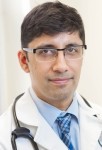
By KIM BELLARD
There are so many stories about the coronavirus pandemic — some inspiring, some tragic, and all-too-many frustrating. In the world’s supposedly most advanced economy, we’ve struggled to produce enough ventilators, tests, even swabs, for heaven’s sake.
I can’t stop thinking about infrastructure, especially unemployment systems.
We’d never purposely shut down our economy; no nation had. Each state is trying to figure out the best course between limiting exposure to COVID-19 and keeping food on people’s tables. Those workers deemed “essential” still show up for work, others may be able to work from home, but many have suddenly become unemployed.
The U.S. is seeing unemployment levels not seen since the Great Depression, and occuring in a matter of a couple months, not several years. As of this writing, there are over 22 million unemployed; no one believes that is a complete count (not everyone qualifies for unemployment), and few believe that will be the peak.
Many unemployment systems could not manage the flood of applications.
Continue reading…

















